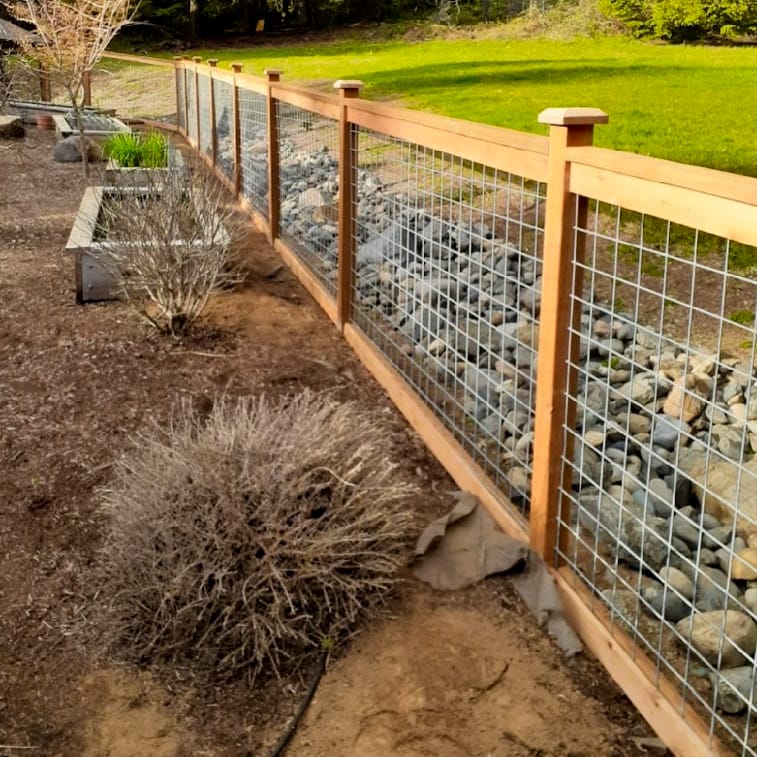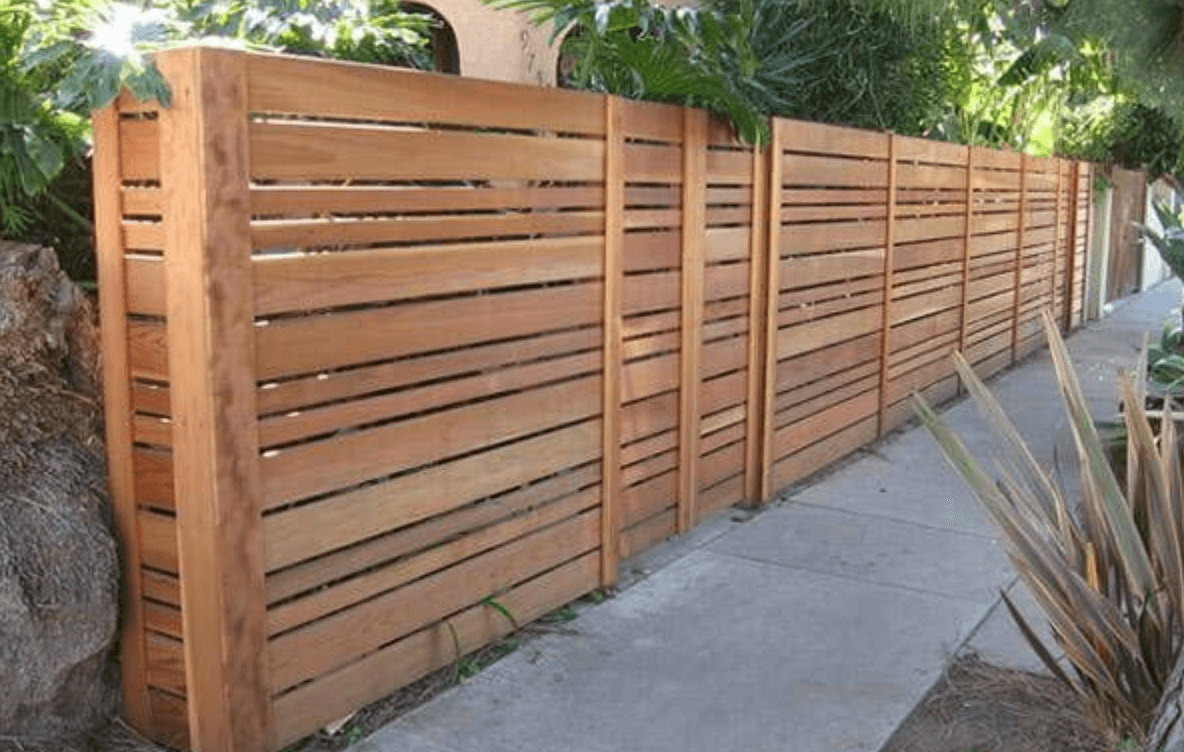All Categories
Featured
When it concerns safeguarding your property, picking the best fencing elevation is among the most vital factors to take into consideration. A fence's height can substantially impact its ability to deter trespassers, safeguard your privacy, and enhance the general security of your home or business. Nonetheless, choosing the optimal elevation requires cautious factor to consider of several elements, including neighborhood laws, your safety needs, and the kind of fencing material you select. Right here's a guide to help you make the finest decision when determining your fence elevation for maximum safety and security.
![]()
In some areas, you might also require a permit for fencings taller than a particular elevation. Furthermore, ensure you understand any type of neighborhood standards, specifically if you stay in an area with a home owners' association (HOA) that implements specific rules on fence height, design, and material.
The goal is to make it challenging for anyone to quickly breach the fencing or scale. Taller fencings decrease the danger of burglaries, particularly when combined with various other deterrents like sharp messages or trellis extensions on top. If your residential or commercial property is situated in a high-crime area or you are worried concerning invaders, selecting a taller fencing can considerably boost your satisfaction.
![]()
Wrought Iron Fencings: These are commonly 6 to 8 feet high and are excellent for security functions. The stamina and resilience of functioned iron make it tough for burglars to break with or climb. Wooden Fences: While wooden fences offer personal privacy, their safety depends upon their elevation and design. A solid wood fence that goes to the very least 6 feet high can serve as a solid obstacle, however including attributes like anti-climb tops can enhance its security. Chain-Link Fences: Chain-link fences are frequently chosen for their cost-effectiveness and stamina. To enhance security, lots of house owners include barbed or razor wire to the top of the fencing or boost its height to 8 feet or even more. When picking a product, think about the trade-offs between visual appeal and safety. Products like wood or vinyl offer personal privacy however may not be as hard to climb as steel fencings, while functioned iron or steel fencings use toughness and boosted security.
On the other hand, if presence is a concern-- particularly for monitoring functions or to guarantee that next-door neighbors can see dubious task-- after that a much shorter, much more transparent fence might be suitable. Chain-link fences, while supplying less privacy, allow for greater exposure, making it much easier for passersby or neighbors to spot anyone attempting to breach your fencing.
Anti-Climb Functions: Add trellis extensions, directed tops, or barbed cable to make it a lot more tough for trespassers to scale the fencing. Motion Sensors and Security Cameras: Positioning video cameras along your fence line or installing movement detectors can aid identify suspicious activity and further discourage trespassers. Electric Secure fencing: For higher levels of protection, consider adding an electrical fence to your existing fence. These systems are created to provide a moderate shock to any person who tries to climb the fencing or touch. 6. Consider Looks and Area Effect. While safety and security is the main concern, it's also important to think about the aesthetic appeals of your fence, specifically if you stay in a neighborhood with a solid sense of community. A fencing that is too high or imposing can create a hostile ambience and may not be well-received by neighbors.
Consider your area's total visual and choose a fencing height that stabilizes both protection and aesthetic charm. A fence that is aesthetically appealing while still giving sufficient security can enhance both the appearance and the security of your residential property.
Verdict. Selecting the best fencing elevation for optimal security needs stabilizing practicality, appearances, and regional policies. In general, a fencing height of 6 to 8 feet is ideal for giving adequate defense against intruders, though taller fences can be utilized for included protection if needed.
- Understand Neighborhood Regulations and Zoning Laws. Before you make a decision on a fence height, it's important to contact your local district or property owners' organization to guarantee that you're in compliance with regional zoning regulations and policies. Most locations have limitations on the elevation of fencings, particularly ahead yards or along property lines. As an example, property surround front yards are typically limited to a height of 3 to 4 feet, while yard fences can be higher-- usually as much as 6 to 8 feet or more.

In some areas, you might also require a permit for fencings taller than a particular elevation. Furthermore, ensure you understand any type of neighborhood standards, specifically if you stay in an area with a home owners' association (HOA) that implements specific rules on fence height, design, and material.
- Consider Your Safety And Security Demands. The height of your fence plays an important role in the degree of security it supplies. A fencing that is also brief may be easy to leap or climb up over, while a taller fence can act as a more powerful deterrent against burglars. For optimal safety and security, think about a fencing height of at the very least 6 feet, with lots of home owners selecting 8-foot fences or higher when security is a top concern.
The goal is to make it challenging for anyone to quickly breach the fencing or scale. Taller fencings decrease the danger of burglaries, particularly when combined with various other deterrents like sharp messages or trellis extensions on top. If your residential or commercial property is situated in a high-crime area or you are worried concerning invaders, selecting a taller fencing can considerably boost your satisfaction.
- Pick the Right Fence Material. The material of the fencing you select likewise influences the protection it offers. Some products give even more robust defense than others, also at the very same elevation. As an example:

Wrought Iron Fencings: These are commonly 6 to 8 feet high and are excellent for security functions. The stamina and resilience of functioned iron make it tough for burglars to break with or climb. Wooden Fences: While wooden fences offer personal privacy, their safety depends upon their elevation and design. A solid wood fence that goes to the very least 6 feet high can serve as a solid obstacle, however including attributes like anti-climb tops can enhance its security. Chain-Link Fences: Chain-link fences are frequently chosen for their cost-effectiveness and stamina. To enhance security, lots of house owners include barbed or razor wire to the top of the fencing or boost its height to 8 feet or even more. When picking a product, think about the trade-offs between visual appeal and safety. Products like wood or vinyl offer personal privacy however may not be as hard to climb as steel fencings, while functioned iron or steel fencings use toughness and boosted security.
- Privacy and Visibility Considerations. If privacy is a substantial problem, specifically in household locations, you may choose a taller fencing that obstructs the view from the exterior. Strong wood or vinyl fences that are 6 to 8 feet high can prevent others from seeing right into your residential property, which aids enhance safety and security by reducing the likelihood of burglars searching your home.
On the other hand, if presence is a concern-- particularly for monitoring functions or to guarantee that next-door neighbors can see dubious task-- after that a much shorter, much more transparent fence might be suitable. Chain-link fences, while supplying less privacy, allow for greater exposure, making it much easier for passersby or neighbors to spot anyone attempting to breach your fencing.
- Added Protection Functions to Boost Height. While elevation is an important component of safety and security, it is essential to bear in mind that a high fence alone might not suffice to discourage figured out trespassers. Consider incorporating your fencing with other safety attributes for maximum protection:
Anti-Climb Functions: Add trellis extensions, directed tops, or barbed cable to make it a lot more tough for trespassers to scale the fencing. Motion Sensors and Security Cameras: Positioning video cameras along your fence line or installing movement detectors can aid identify suspicious activity and further discourage trespassers. Electric Secure fencing: For higher levels of protection, consider adding an electrical fence to your existing fence. These systems are created to provide a moderate shock to any person who tries to climb the fencing or touch. 6. Consider Looks and Area Effect. While safety and security is the main concern, it's also important to think about the aesthetic appeals of your fence, specifically if you stay in a neighborhood with a solid sense of community. A fencing that is too high or imposing can create a hostile ambience and may not be well-received by neighbors.
Consider your area's total visual and choose a fencing height that stabilizes both protection and aesthetic charm. A fence that is aesthetically appealing while still giving sufficient security can enhance both the appearance and the security of your residential property.
Verdict. Selecting the best fencing elevation for optimal security needs stabilizing practicality, appearances, and regional policies. In general, a fencing height of 6 to 8 feet is ideal for giving adequate defense against intruders, though taller fences can be utilized for included protection if needed.
Latest Posts
Find Out Cut Costs on Car Maintenance with Montclare Auto Repair’s Special Deals
Published May 29, 25
1 min read
Boost Your Building with Expenses Door Equipment
Published May 26, 25
1 min read
Find Affordable Auto Repairs with Montclare’s Limited-Time Service Specials
Published May 24, 25
1 min read
More
Latest Posts
Find Out Cut Costs on Car Maintenance with Montclare Auto Repair’s Special Deals
Published May 29, 25
1 min read
Boost Your Building with Expenses Door Equipment
Published May 26, 25
1 min read
Find Affordable Auto Repairs with Montclare’s Limited-Time Service Specials
Published May 24, 25
1 min read